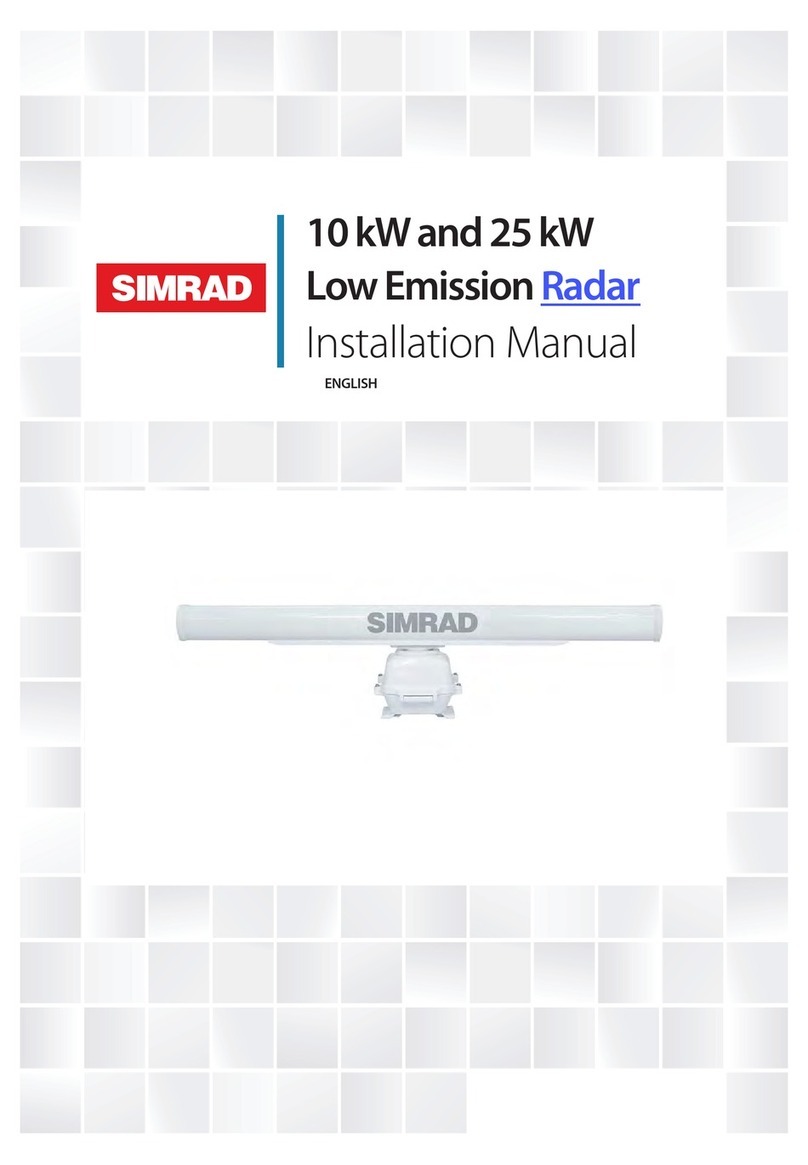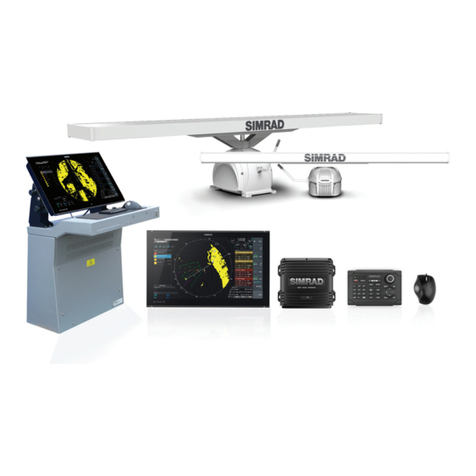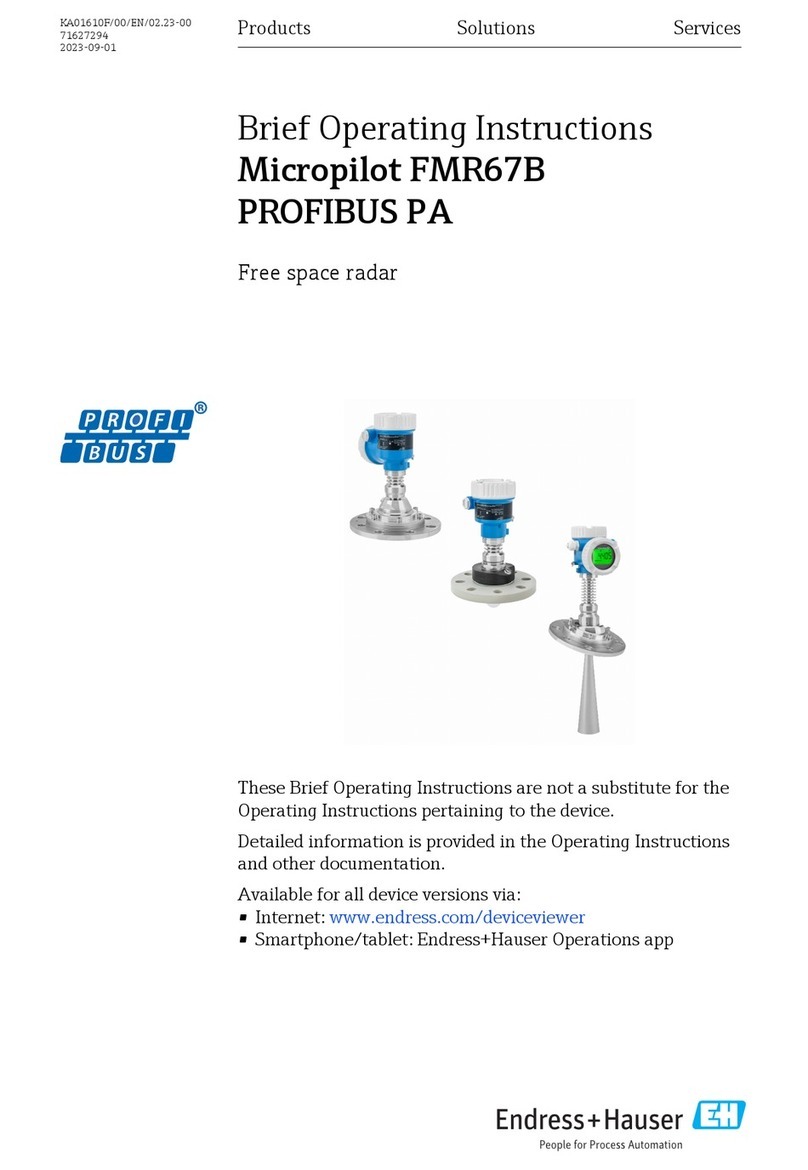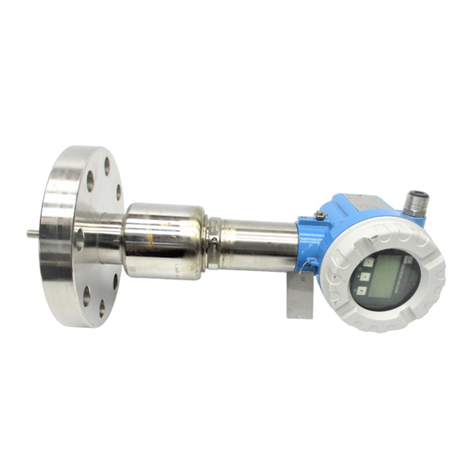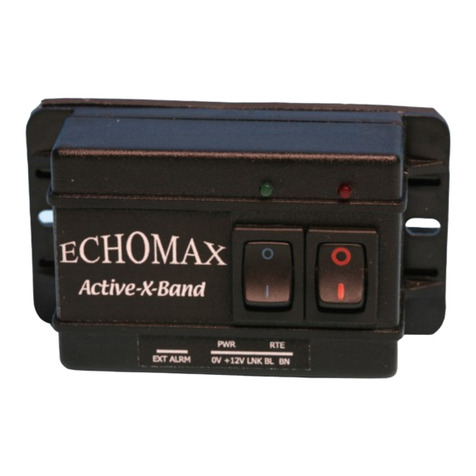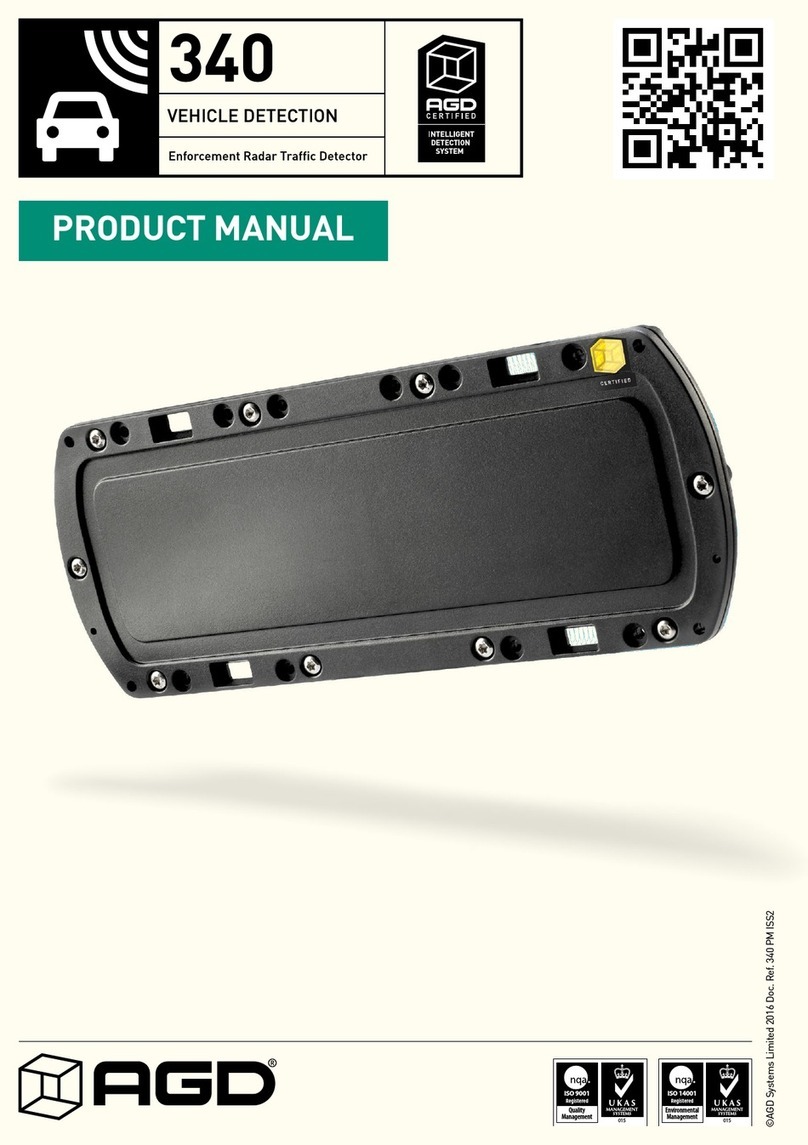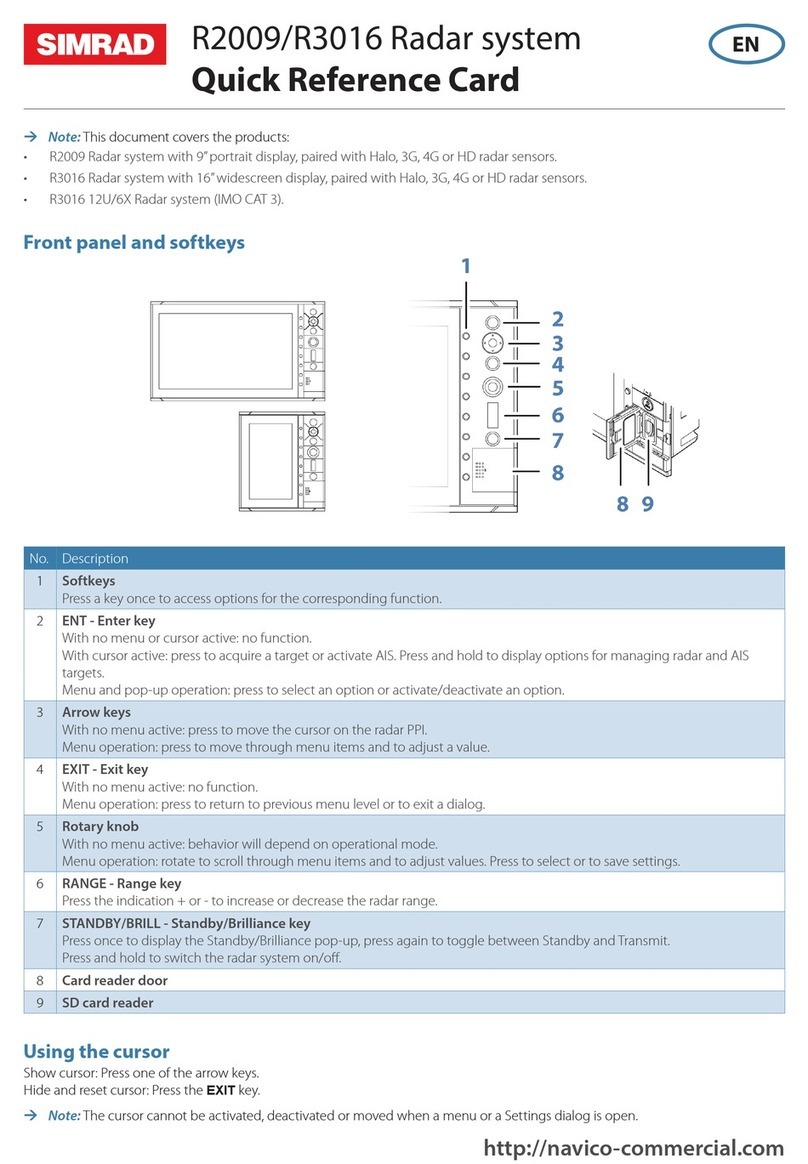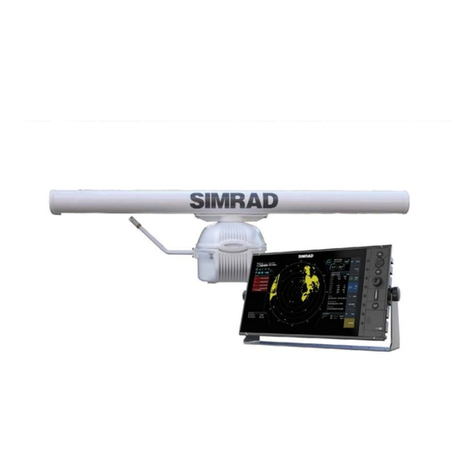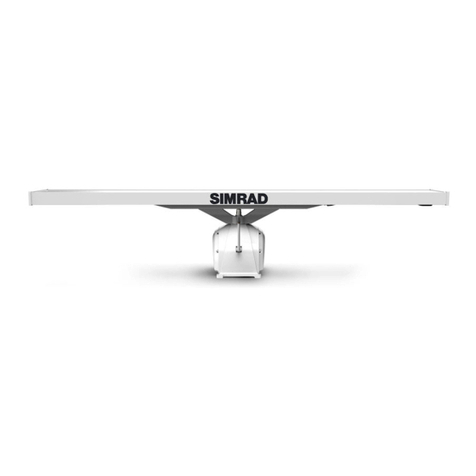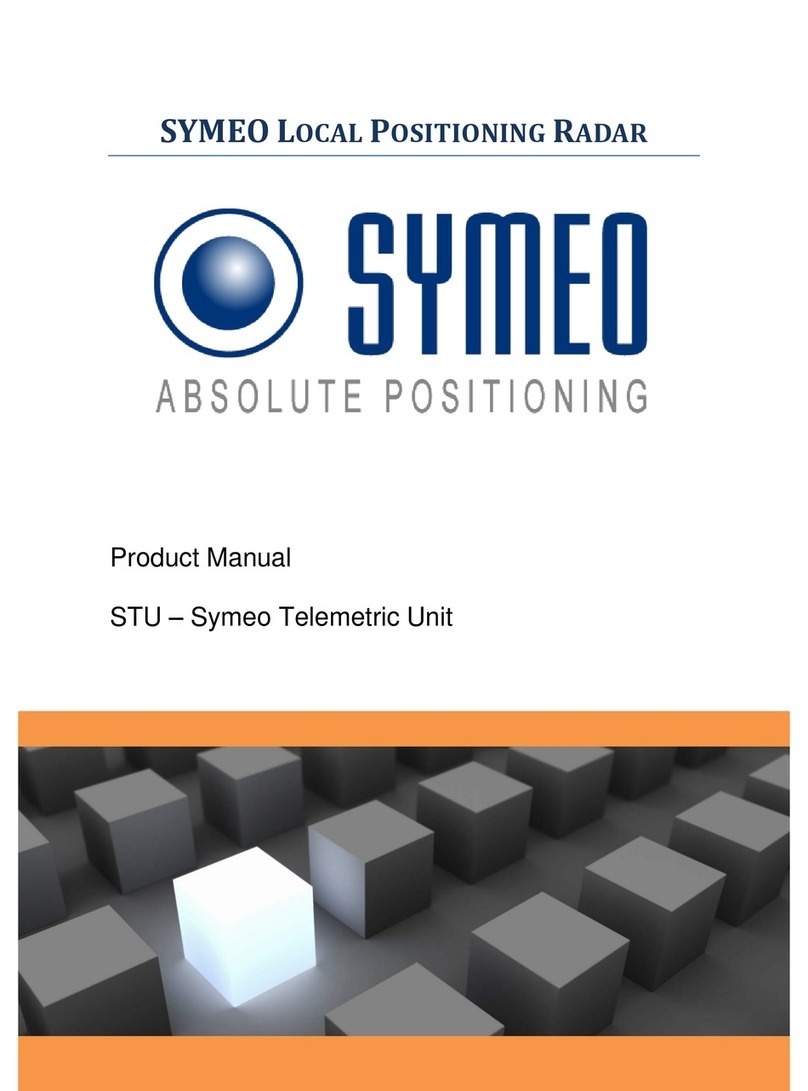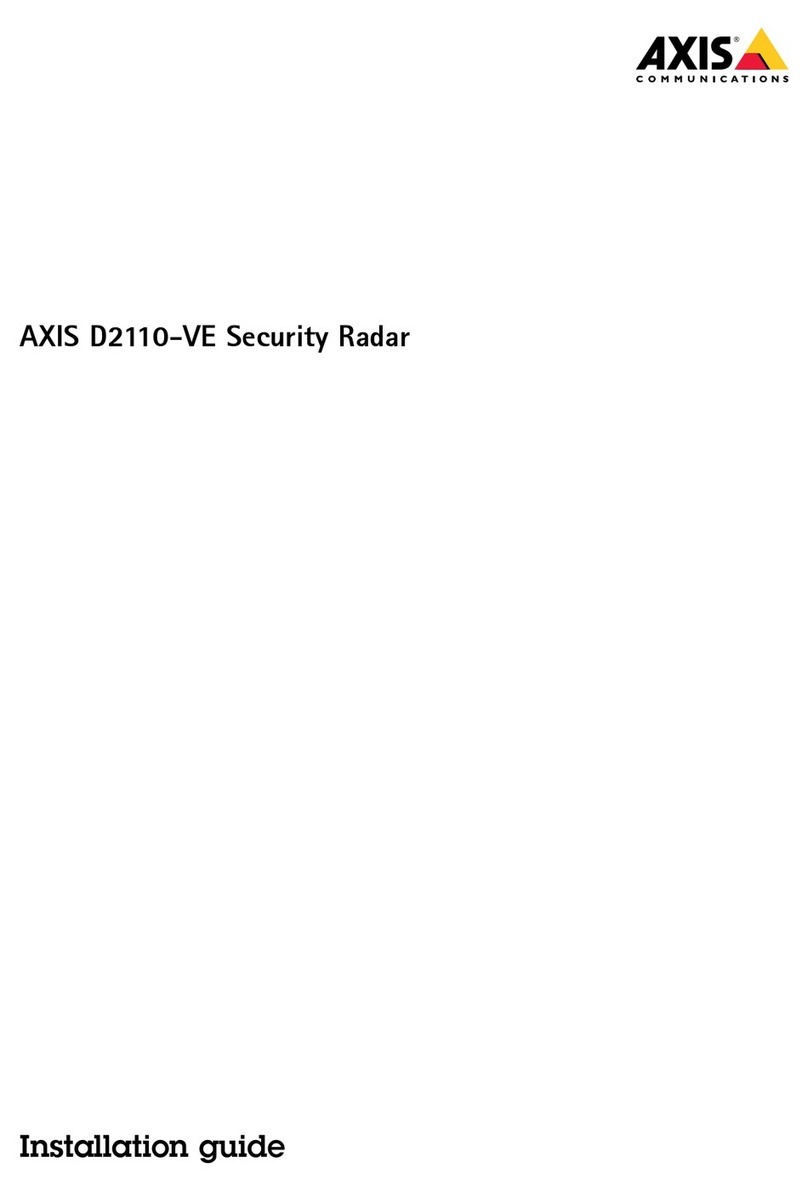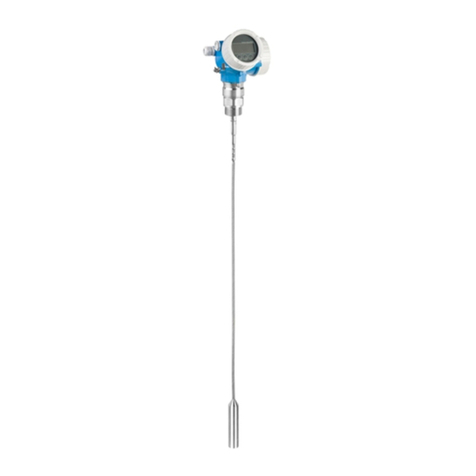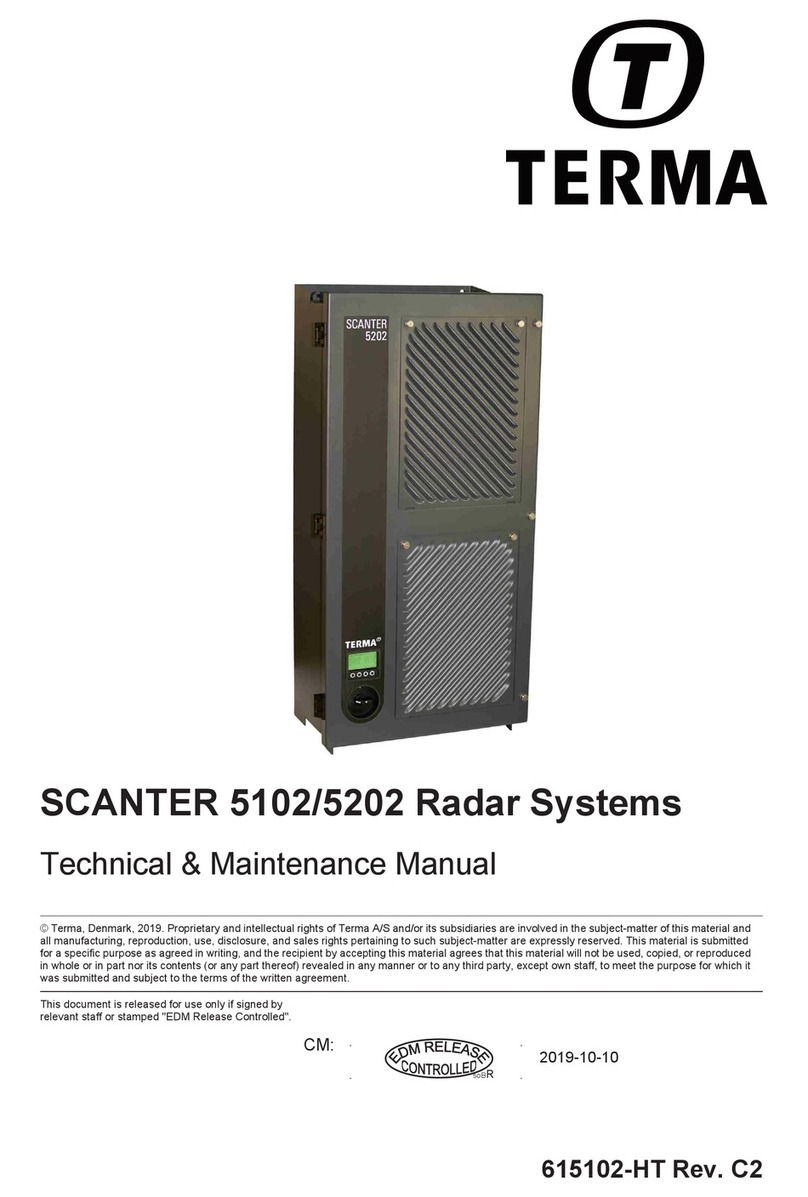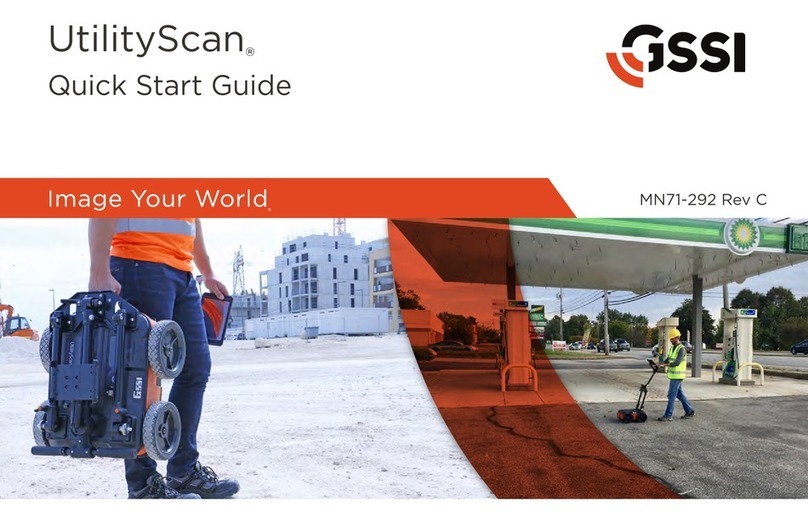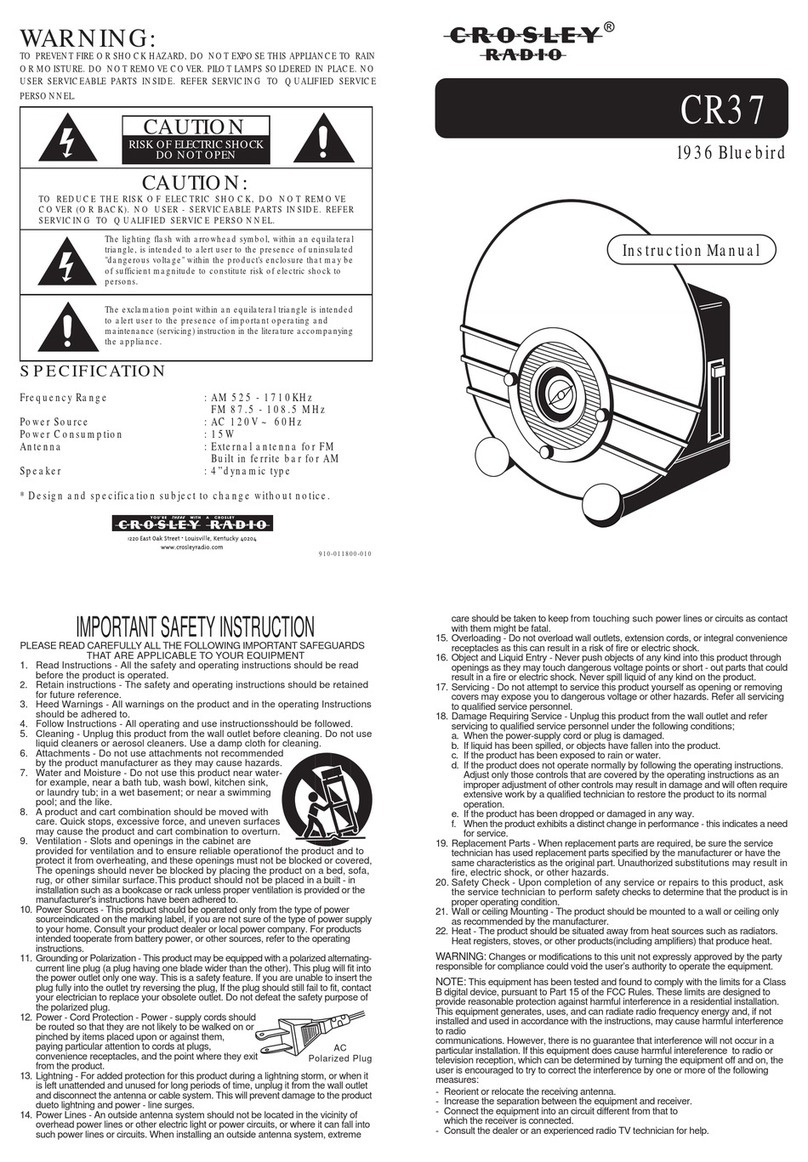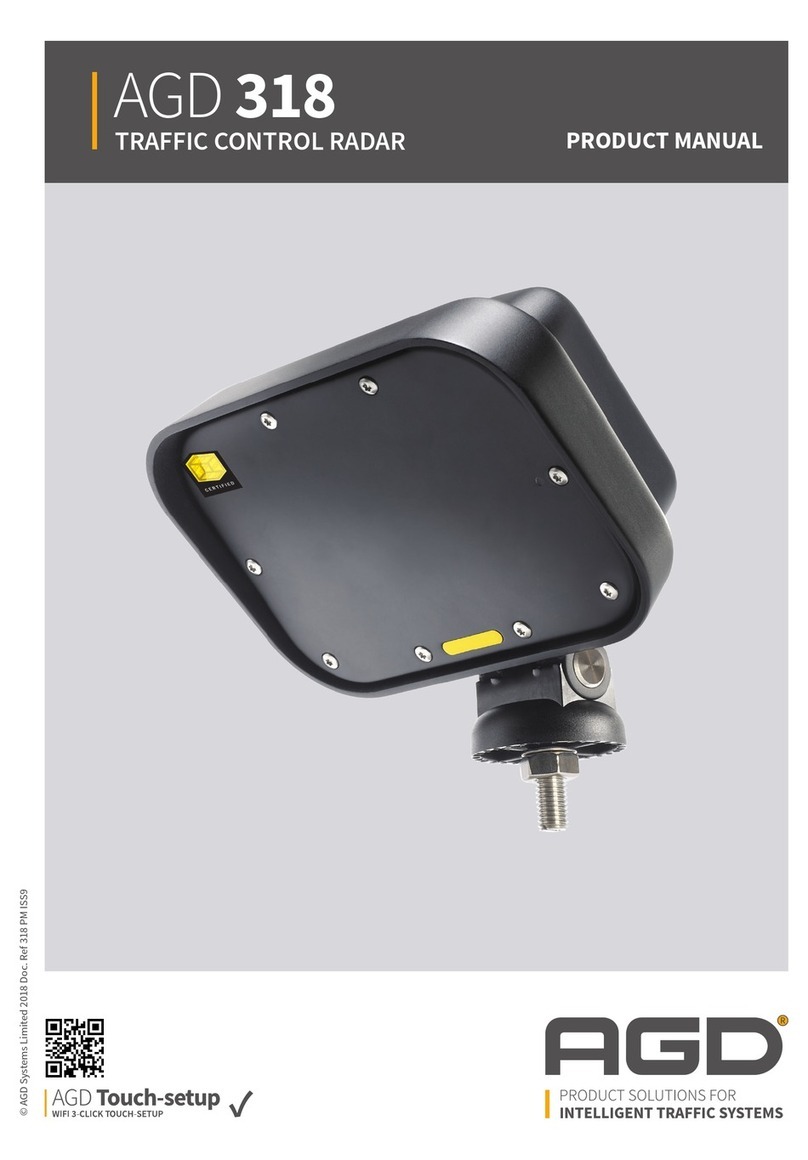Argus Radar - Installation and service manual
TABLE OF CONTENTS
CHAPTER 1 Installation and settingS..................................................................... 1.1
1.1 GUIDELINES FOR THE INSTALLATION OF SHIPBORNE RADAR EQUIPMENT .................... 1.1
1.2 INTERFERENCE ...................................................................................................................... 1.1
1.2.1 Location relative to masts, funnels and other constructions ...........................1.1
1.2.2 Blind sectors and range...........................................................................................1.2
1.2.3 Interaction with sea and false echoes......................................................................1.3
1.2.4 Cables and grounding .............................................................................................1.3
1.2.5 Radar controls and display......................................................................................1.4
1.3 SYSTEM SPECIFICATIONS ..................................................................................................... 1.5
1.3.1 Dimension and Weight.............................................................................................1.5
1.3.2 Power.......................................................................................................................1.5
1.3.3 Environmental Data ................................................................................................1.5
1.4 INPUT/OUTPUT REQUIREMENTS .......................................................................................... 1.6
1.5 ANALOGUE GYRO COMPASS (SYNCHRO OR STEPPER).................................................... 1.7
1.6 SERIAL GYRO ....................................................................................................................... 1.10
1.7 SPEED LOG........................................................................................................................... 1.10
1.8 EPFS ...................................................................................................................................... 1.11
1.9 AIS......................................................................................................................................... 1.11
1.10 BAM ...................................................................................................................................... 1.11
1.11 VDR CONNECTION .............................................................................................................. 1.12
1.12 RADAR CONSOLE FAILURE OUTPUT ................................................................................. 1.13
1.13 CONFIGURATION LINKS TABLE ......................................................................................... 1.13
1.13.1 Antares PCB Links: ...............................................................................................1.13
1.13.2 Alpha PCB Links: ..................................................................................................1.13
1.13.3 Alpha Expansion PCB Links: ................................................................................1.15
CHAPTER 2 SERIAL INTERFACE SPECIFICATIONS............................................. 2.1
2.1 SERIAL LINE 1, HEADING...................................................................................................... 2.1
2.2 SERIAL LINE 2, AIS ................................................................................................................ 2.3
2.3 SERIAL LINE 3, EPFS -GPS................................................................................................. 2.10
2.4 SERIAL LINE 4 ...................................................................................................................... 2.28
2.5 SERIAL LINE 5 ...................................................................................................................... 2.30
2.6SERIAL LINE 6 ...................................................................................................................... 2.31
2.7 SERIAL LINE 7 ...................................................................................................................... 2.32
2.8 SERIAL LINE 8 ...................................................................................................................... 2.33
CHAPTER 3 RADAR CONFIGURATION .................................................................. 3.1
3.1 HOW TO ACCESS THE RADAR CONFIGURATION................................................................. 3.1
3.1.1 Radar Configuration................................................................................................3.1
3.2 GYROCOMPASS CONFIGURATION........................................................................................ 3.3
3.3 SPEED LOG CONFIGURATION .............................................................................................. 3.5
3.4 OWN SHIP DIM.AND WEIGHT .............................................................................................. 3.6
3.5 CONNING AND EPFS POS.CONFIGURATION MENU ........................................................... 3.7
3.6 UNCONVENTIONAL SENSOR CFG......................................................................................... 3.8
3.7 ANTENNA SETTINGS.............................................................................................................. 3.9
3.7.1 Adjustment of Azimuth Type (PPR Selection)........................................................3.10
3.7.2 Adjustment of the heading line ..............................................................................3.11
3.8 TXRX SETTINGS .................................................................................................................. 3.12
3.8.1 Transceiver Communication Type .........................................................................3.13
3.8.2 Transceiver Communication Type .........................................................................3.13
3.8.3 Performance Monitor Adjustment .........................................................................3.14
3.8.4 Tuning Adjustment.................................................................................................3.15
3.8.5 Magnetron timer reset ...........................................................................................3.15
3.8.6 Digital potentiometers reset...................................................................................3.15
3.9 VIDEO TRIGGER ADJUSTMENTS......................................................................................... 3.16
3.9.1 Video Adjust Mode.................................................................................................3.17
3.9.2 Adopted communication configurations ................................................................3.17

